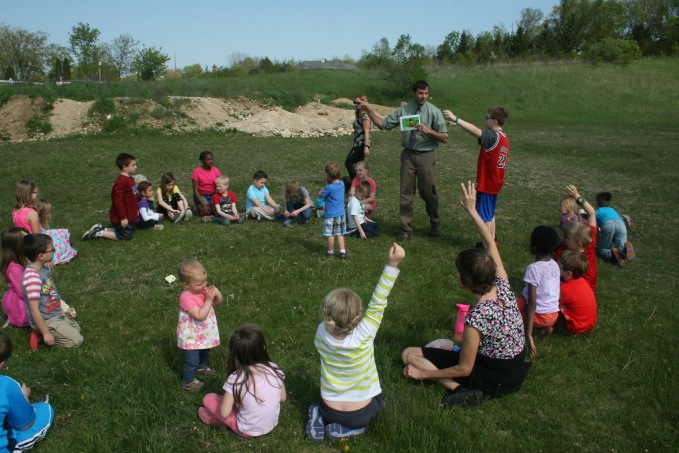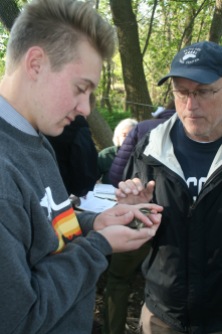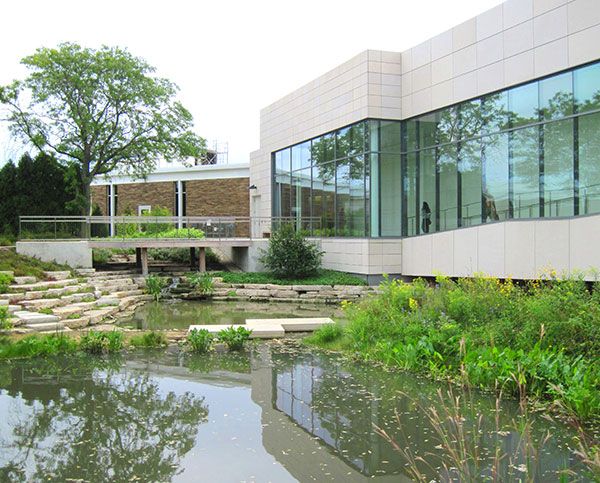
Late May begins the turtle monitoring season for the Ozaukee Washington Land Trust. I was asked to be in charge of bird and turtle monitoring for the Schoofs Preserve in Washington County, WI. The Schoofs Preserve contains a 1-acre pond which is perfect for turtle monitoring. The purpose is to survey the types of turtles present and to get an idea of population size and structure. Turtle traps consist of 3-hoops covered with netting and an open section on the funnel end (see picture below). Sardines are placed inside to attract the turtles which can get in but not out. Traps are placed in 2-3 feet of water and the top 6-12 inches need to be above water so the caught turtles can breathe. Traps are checked daily for 5-day periods. These sets are done several times until early July.

Today’s trapping was very successful. I had placed 3 traps on the pond yesterday afternoon and traps #2 and #3 contained 1 snapping turtle and 2 painted turtles each! All turtle species are identified and have their top shell (carapace) measured. Before releasing they have a notch filed into their shell to mark that they have been previously captured. This does not hurt the turtle in any way

The tricky part is extracting snapping turtles. Their claws are very big (used for burrowing into pond sediment) and their name is an understatement to their biting power. Their neck can reach remarkably far side to side and even to the top back side of their shell. WI has 11 species of turtle with one of those being the land dwelling box turtle. Besides the snapping and painted turtles that were caught, only 3 other species would be anticipated to possibly dwell on the Schoofs Preserve: spiny soft-shell turtle, eastern musk turtle, and blanding’s turtle. Please contact me if interested in helping with or learning more about the monitoring projects. The bird survey of the preserve will begin in June.










































